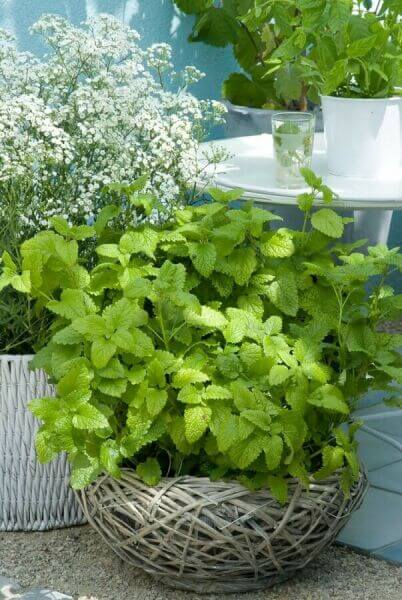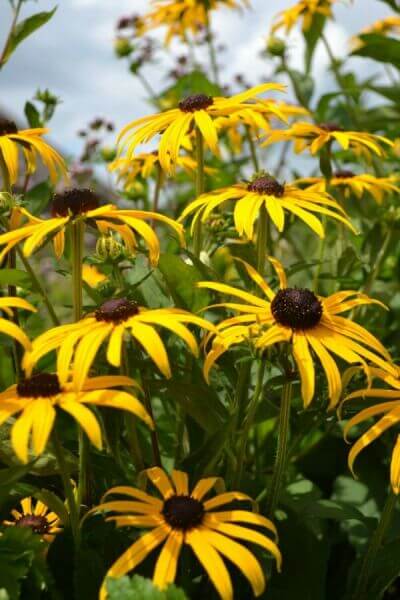Hedging Plants For Tropical Gardens
Improve your garden's appeal with lush hedge ranges such as Yew (Taxus), Thuja, Laurel, Photinia, and Bamboo, celebrated for their structural integrity and ecological advantages.
Yew and Thuja provide evergreen coverage and winter season resilience, while Laurel uses rapid growth and broad, aromatic leaves.
Photinia includes seasonal beauty with its vibrant red foliage, and Bamboo lends a low-maintenance, tranquil atmosphere.
These hedges enhance air quality, reduce noise, and produce tranquil, personal areas.
Appropriate planting, spacing, and upkeep ensure energetic development and ecological harmony.
Explore how these rich varieties can elevate your garden's beauty and well-being.
Key Takeaways
Transform Your Garden With Lush Hedge Varieties
- Select Yew for its dense, evergreen growth and unrivaled longevity.
- Choose Laurel for its quick development and broad leaves, making sure fast personal privacy.
- Choose Photinia for its lively seasonal foliage, which turns a striking dark red.
- Use Bamboo for a low-maintenance, winter-hardy hedge with aesthetic appeal.
- Area plants 2-3 per meter and prune routinely for optimum growth and health.
Popular Hedge Plants
When changing a garden with rich hedge ranges, it's vital to consider popular hedge plants such as Yew, Thuja, Laurel, and Photinia due to their distinct qualities and benefits.
Yew (Taxus) is extremely esteemed for its durability and dense, green development, making it a prime choice for sustaining landscapes.
Thuja is noted for its evergreen foliage and robust winter season resilience.
Photinia adds seasonal vibrancy with red leaves that darken over time, developing vibrant visual appeal.
Laurel provides quick development and fragrant, broad leaves, suitable for fast privacy.
Furthermore, Bamboo is an excellent choice for atmosphere, using a low-maintenance, winter-hardy option that improves the garden's visual with its classy, swaying walking canes.
These selections accommodate a range of horticultural requirements and preferences.
Advantages of Garden Hedges
Garden hedges offer a wide variety of advantages, making them an important addition to any landscape. These natural barriers are cost-effective to implement and offer substantial wind defense, boosting air circulation and contributing to noise reduction. The dense foliage of hedges like Thuja and Beech ensures personal privacy by blocking presence, developing a serene and secluded environment.
Hedges likewise play a crucial role in microclimate policy, supplying a steady environment that promotes plant development and lessens temperature changes. Their elaborate leaf structures filter pollutants, improving air quality and adding to a healthier garden community.
Moreover, hedges master sound decrease, taking in and deflecting sound waves to lower ambient noise levels. This double performance of offering both acoustic and visual privacy enhances the total tranquility and aesthetic appeal of any garden.
Planting and Maintenance Tips
For an effective hedge, precise preparation of the planting area is vital. Guarantee the soil has correct pH and drain to support strong root development.
Area the plants properly for the selected species. Water the hedge regularly throughout its initial development phase, changing as required with seasonal modifications.
Implement a organized bug control and illness prevention method, utilizing natural or chemical treatments when required. Frequently examine for aphids, termites, and fungal infections.
Apply mulch to keep wetness and suppress weeds. Seasonal pruning promotes thick growth and air blood circulation, vital for plant health.
Following these guidelines will assist you cultivate a vibrant, well-kept hedge that enhances the charm of your garden.
Spacing and Cutting Guidelines
Spacing and Cutting Standards
Appropriate spacing and cutting are essential for cultivating healthy, aesthetically appealing hedges. Appropriate spacing guarantees each plant gets sufficient nutrients, light, and air flow.
Follow these standards for optimal hedge maintenance:
- Spacing: Position hedge plants 2-3 plants per meter to encourage robust development.
- Pruning Techniques: Regular pruning is important for keeping desired hedge height and shape. Trim brand-new development in summer and cut back older wood throughout winter season.
- Seasonal Care: Change trimming techniques and schedules according to seasonal requirements to make sure plant health.
- Hedge Height: Frequently display and trim to maintain the desired hedge height and accomplish consistent looks.
Sticking to these steps will ensure your hedge prospers, improving both the appeal and performance of your garden.
Picking the Right Hedge
Selecting the Right Hedge
Choosing the suitable hedge includes assessing elements such as fully grown height, foliage density, and ecological durability. Effective hedge plant selection requires understanding each types' growth attributes and site-specific flexibility.
For instance, Yew (Taxus) offers excellent longevity and dense growth, while Thuja is significant for its winter season durability. Furthermore, thinking about maintenance requirements is vital; fast-growing types like Laurel or Privet need regular trimming, whereas low-maintenance alternatives like Bamboo or Ivy may be more effective for those seeking minimal maintenance.
Environmental elements such as soil type, light availability, and wetness conditions must also assist the selection process. This mindful method ensures the selected hedges will flourish, providing both visual and functional benefits to the garden landscape.
Shipment and Planting Recommendations
To ensure your hedge plants grow, they ought to be provided by specialized couriers and planted promptly upon arrival.
Follow these necessary steps for successful planting:
- Soil Preparation: Improve the soil with natural matter to enhance drainage and nutrient content.
- Planting Depth: Develop a trench twice the width and equivalent to the depth of the root ball.
- Watering Techniques: Water completely after planting, keeping the soil regularly moist but not saturated.
- Mulching: Apply a layer of mulch to keep wetness and reduce weeds.
Client Support and Service
Provided the essential function of timely support in horticultural pursuits, our consumer support group is readily available six days a week through telephone, e-mail, and social networks to offer professional advice and quickly resolve any issues. Their dedication to quick reaction times ensures customer fulfillment by solving questions related to plant health, optimal planting methods, and upkeep schedules.

Accessibility
Within 24 hours
This detailed assistance system, enhanced by an excellent 9.3/ 10 client rating, highlights our commitment to improving the gardening experience for every single client.
Frequently Asked Questions
For How Long Does It Take for Hedge Plants to Establish?
Hedge plants typically require one to three years to end up being totally developed, with the specific period differing by types and growing conditions.
Reliable care throughout this important duration is important for robust development. Constant watering, vigilant weed control, and appropriate fertilizer application are pivotal in promoting strong root advancement.
For example, fast-growing species like Laurel might establish faster, while slower-growing varieties such as Yew might take longer. Persistent upkeep speeds up the establishment process, leading to thick and healthy hedges.
What Are the Finest Hedge Plants for Privacy?
The question of the very best hedge plants for privacy includes examining evergreen and deciduous alternatives.
Evergreen hedges like Thuja, Laurel, and Cypress supply year-round protection, guaranteeing continuous personal privacy.
On the other hand, deciduous hedges such as Beech provide seasonal privacy, shedding leaves in cooler months.
Secret maintenance tips for personal privacy hedges include regular cutting, fertilizing in spring, and correct spacing-- usually 2 to 3 plants per meter.
Additionally, constant watering and persistent weed elimination are essential for promoting healthy, thick development.
Can Hedge Plants Draw In Wildlife to My Garden?
Yes, hedge plants can attract wildlife to your garden by supplying important advantages like shelter, food, and nesting sites, thereby improving local biodiversity. For example, yew, holly, and laurel are excellent for drawing in birds, while ivy supports a range of bugs.
However, it is very important to note that there are some downsides, such as increased maintenance to handle pests and regular maintenance. Carefully choosing and maintaining hedge varieties can assist stabilize these disadvantages and advantages, ultimately cultivating a vibrant and sustainable environment in your garden.
Exist Any Flowering Hedge Plants Available?
Yes, there are flowering hedge plants offered that can boost the beauty of your garden.
For example, Elaeagnus, likewise called Olive Willow, produces fragrant white flowers in the fall, including a touch of elegance.
Photinia, another popular choice, showcases vibrant red leaves that develop into an abundant green, creating a dynamic visual impact throughout the seasons.
To make sure these plants grow, it's important to practice appropriate pruning strategies and seasonal maintenance, such as trimming new growth in the summertime and cutting down in the winter.
These measures will assist maintain the health and aesthetic appeal of your blooming hedges.
How Do I Avoid Insects in My Hedge Plants?
To avoid bugs in hedge plants, use natural bug control approaches and keep appropriate hedge here care. Present beneficial insects like ladybugs, which prey on hazardous insects, to produce a balanced community.
Routinely examine your hedges for signs of infestation and without delay get rid of any afflicted parts to avoid the spread. Guarantee the health of your hedges by using balanced fertilizers and providing adequate water.
Make use of mulching to maintain soil wetness and appropriate spacing to decrease plant stress and promote robust growth. These practices jointly assist in lessening pest issues and maintaining a healthy hedge.
Conclusion
In essence, picking the ideal hedge ranges such as Yew, Thuja, and Laurel can change any garden into a peaceful haven. These plants supply year-round plant, enhance visual appeal, and deal practical benefits like sound reduction and wind protection.
Proper planting methods, accurate spacing, constant watering, and seasonal trimming are crucial for ideal development.
Trustworthy shipment services and expert client assistance make sure a seamless experience from purchase to planting, making it simpler than ever to raise your outside space.
Garden hedges provide a multitude of benefits, making them a valuable addition to any landscape. These natural barriers are affordable to execute and supply considerable wind security, improving air flow and contributing to sound decrease. The dense foliage of hedges like Thuja and Beech guarantees personal privacy by blocking presence, producing a secluded and peaceful environment.

Pruning Strategies: Regular pruning is vital for preserving wanted hedge height and shape. Cut brand-new development in summer and cut back older wood throughout winter season.